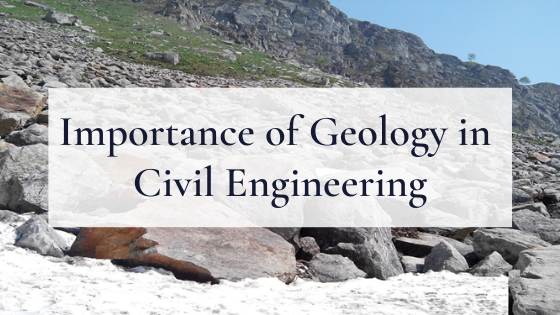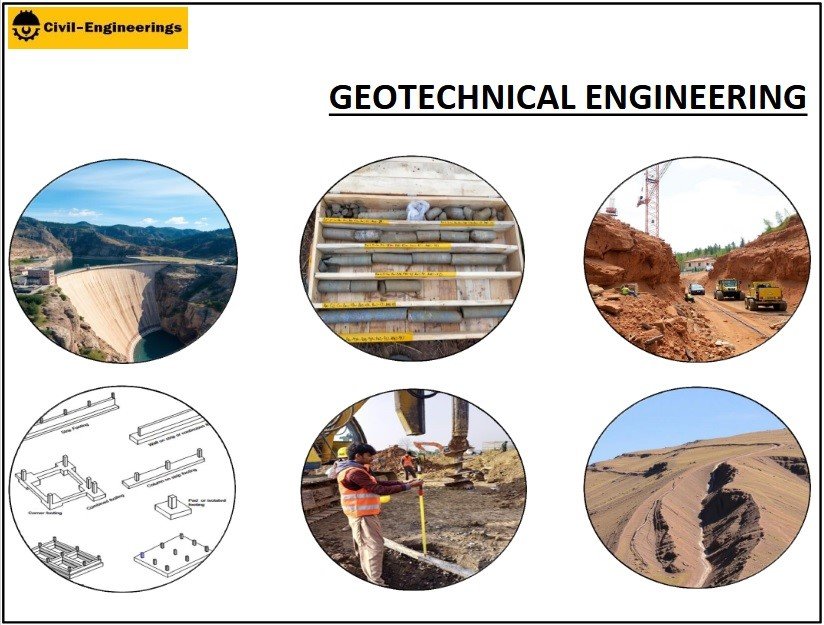Geotechnical Engineering For Construction Projects Fundamentals Explained
What Does Geotechnical Engineering For Construction Projects Mean?
Table of ContentsNot known Facts About Geotechnical Engineering For Construction ProjectsUnknown Facts About Geotechnical Engineering For Construction ProjectsThe 8-Minute Rule for Geotechnical Engineering For Construction ProjectsThe 8-Minute Rule for Geotechnical Engineering For Construction Projects3 Easy Facts About Geotechnical Engineering For Construction Projects Shown9 Simple Techniques For Geotechnical Engineering For Construction Projects10 Easy Facts About Geotechnical Engineering For Construction Projects Described
and Kovacs, W. (1981 ), An Introduction to Geotechnical Engineering, Prentice-Hall, Inc. Deep Scan Tech (2023 ): Deep Scan Tech discovers hidden structures at the website of Denmark's highest structure. "Geofrost Coring". GEOFROST. Recovered 20 November 2020. Han, Jie (2015 ). Concepts and Practice of Ground Improvement. Wiley. ISBN 9781118421307. RAJU, V. R.Ground Enhancement Technologies and Instance Histories. Singapore: Research Study Publishing Providers. p. 809. ISBN978-981-08-3124-0. Ground Enhancement Principles And Applications In Asia. Pariseau, William G. (2011 ). Design analysis in rock mechanics. CRC Press. Hegde, A.M. and Palsule P (Geotechnical Engineering for Construction Projects).S. (2020 ), Performance of Geosynthetics Reinforced Subgrade Subjected to Repetitive Car Loads: Experimental and Numerical Studies.
Cengage Learning, Stamford, 666 p. Atkinson, J., 2007. The technicians of soils and foundations. The Observational Approach in ground engineering concepts and applications.
The smart Trick of Geotechnical Engineering For Construction Projects That Nobody is Talking About
Laboratory and field screening plays a crucial function in this procedure. By drawing out examples from the planet's subsurface and using a suite of examinations, geotechnical designers can anticipate the practices of soil layers and examine their viability for numerous construction efforts. The essence of geotechnical engineering in civil design can not be overstated, attributable to numerous variables: The preliminary action in any geotechnical research study includes establishing the dirt kind at the building website.
Comprehending these features makes certain that just ideal dirt kinds are chosen for the development, consequently avoiding possible structural failings. The foundation functions as the bedrock of any building and construction task. Choosing the suitable structure kind is a choice that rests on the comprehensive analysis offered by geotechnical engineering. This makes sure the long life and security of frameworks by suiting the lots they will certainly birth.

Geotechnical site investigation is an important action in the planning and implementation of any type of construction project. It involves the collection and evaluation of data associated with the physical buildings of soil and rock under a suggested construction site. This details is important for the style and construction of risk-free, secure, and lasting frameworks.
Excitement About Geotechnical Engineering For Construction Projects
In this blog, we will look into the importance of geotechnical website investigation, its numerous components, and exactly how it benefits building and construction projects. Geotechnical site investigation, likewise referred to as subsurface exploration, entails a collection of tasks intended at establishing the dirt, rock, and groundwater problems at a construction website. The key goals are to identify possible geotechnical risks, analyze the engineering residential or commercial properties of subsurface products, and offer recommendations for the style and building and construction of structures, retaining wall surfaces, and various other structures.
The workdesk study assists in identifying prospective geotechnical problems and preparing the succeeding fieldwork. This includes observing the topography, drain patterns, existing structures, vegetation, and any type of indications of instability or disintegration.
Not known Details About Geotechnical Engineering For Construction Projects
Superficial test pits are dug deep into to directly observe and sample the dirt and rock. This technique serves for researching the upper layers of the subsurface and determining near-surface risks. Non-invasive geophysical methods, such as seismic refraction, ground-penetrating radar (GPR), and electrical resistivity tomography (ERT), are used to map subsurface problems and identify abnormalities.
Soil and rock samples gathered during the field investigation are subjected to lab screening to identify their physical and mechanical properties. These tests offer necessary data for geotechnical analysis and design.
The primary benefit of geotechnical website investigation is making sure the safety and security of frameworks. By recognizing the subsurface problems, engineers can develop foundations and other architectural aspects that can stand up to the lots and ecological pressures they will be subjected to. This minimizes the danger of negotiation, subsidence, and structural failure.
The Of Geotechnical Engineering For Construction Projects
This makes sure efficient and safe building and construction techniques. Geotechnical website examinations are usually needed by building codes and regulations.
This information is vital for project managers, designers, and specialists in establishing practical routines, budget plans, and contingency strategies. Geotechnical Engineering for Construction Projects. High-Rise Building in a Coastal AreaIn a coastal city, a skyscraper residential building was prepared on a website with thought loose sand deposits and a high water table. A detailed geotechnical examination, consisting of borehole boring, CPT, and geophysical surveys, was conducted
The Buzz on Geotechnical Engineering For Construction Projects
Based upon these findings, the foundation style was customized to consist of deep stack structures prolonging right into steady strata, and ground enhancement techniques, such as vibro-compaction, were implemented to reduce liquefaction threats. This aggressive technique guaranteed find out here the security and stability of the building while preventing expensive post-construction remediation. Facilities Development on a Sloping TerrainA significant framework project, including the building and construction of a highway and bridges, was intended on a sloping surface with high slopes.

The Leaning Tower of Pisa (Italy), a legendary building marvel, is infamous for its unexpected tilt from considerable geotechnical concerns. The tower's structure was inadequately designed to take care of the soft, unsteady dirt below it, causing uneven settlement and its unique lean. Our world is populated with outstanding facilities projectsfrom towering skyscrapers to stretching bridgesall standing testimony to the advancement of the various construction tools and visit this site approaches offered.
Geotechnical engineering is a specific field within civil engineering that focuses on studying the behavior of earth materials. This branch digs deep into the groundinvestigating exactly how the soil, rock, and groundwater at a building site can influenceand be affected bythe infrastructure that we put up on and into them. Before a solitary brick is laid or a concrete structure put, geotechnical engineers probe into the earthgathering critical information about the website's soil structure, rock framework, and groundwater levels.
The Ultimate Guide To Geotechnical Engineering For Construction Projects

is a device utilized to examine the integrity and load-bearing capacity of piles during installment, leveraging the concept of wave breeding. It enhances building and construction efficiency by offering real-time assessments, hence ensuring secure and efficient stack structures. Among the practical applications of geotechnical engineering involves making a decision and implementing the appropriate techniques for foundation building.
Pile driving represents more than the simple act of inserting structural components right into the ground. As a find out here now matter of fact, it is a thoroughly coordinated process of transferring a structure's lots past the less stable soil layers more detailed to the surfacedown to the a lot more considerable strata that lie beneath. In the instance of stack driving, think about just how geotechnical designers skillfully utilize this method to equally disperse the structure's weight.